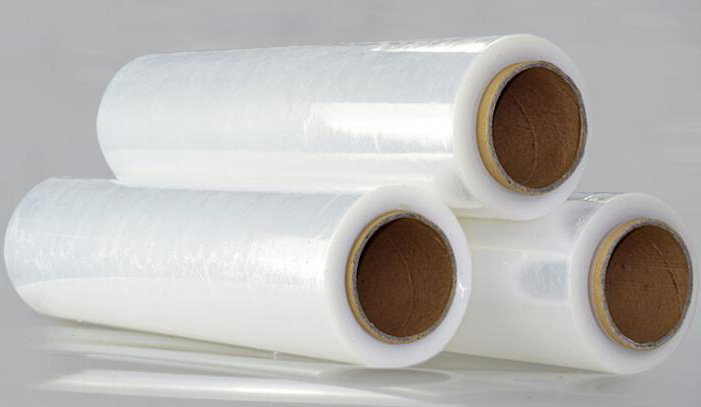What is the difference between blown film and cast film
DATE:2024/10/12 10:52:05 / READ: / SOURCE:This station
Blown film and cast film are two common thin film manufacturing techniques in polymer processing. Although their final products are both thin films, there are significant differences in manufacturing processes, performance characteristics, and application areas. Here is a detailed comparison of these two technologies:
 1. Manufacturing process
1. Manufacturing process
Blowing film: The process of blowing film mainly includes heating and melting polymers (such as LDPE, HDPE, etc.), extruding them through a circular mold, and then using airflow to blow the melted plastic into a thin film. During this process, molten plastic forms a film tube and is continuously stretched and cooled upwards, ultimately forming a thin film. Blown film utilizes air expansion in a molten state to provide the film with good stretchability and strength.
Cast film: The manufacturing process of cast film involves melting the polymer, extruding it through a flat mold, and rapidly cooling and solidifying it on a large area of cooling rollers. This process forms a uniform thin film. The manufacturing method of cast film is relatively simple and forms a flat state, which can usually achieve higher thickness uniformity and smoothness.
2. Performance characteristics
Blown film: blown film products usually have good toughness and tear resistance, suitable for applications that require high strength and high ductility. However, due to gas expansion during the production process, the surface of blown film usually has poor smoothness, uneven thickness, and may not be as transparent as cast film.
Cast film: Cast film has significant advantages in surface smoothness and transparency due to the use of cooling rollers in its production process to ensure uniform film thickness and high transparency. However, the toughness and tear resistance of cast film are slightly inferior to blown film, so it may be limited when used in fields that require high physical strength.
3. Application Fields
Blown film: Due to its excellent physical properties, blown film is widely used in the packaging industry, including food packaging, shopping bags, agricultural films, and other protective films. Its high toughness and tear resistance are very suitable for packaging needs with high mileage requirements.
Cast film: Cast film is usually used to produce products with high gloss and transparency requirements, making it suitable for use in fields such as labels, composite packaging, optical films, etc. In some applications that require high visual effects, the advantages of cast film are more obvious.
4. Economy
Blown film: Generally speaking, blown film production equipment has lower investment costs and higher production efficiency, thus having certain economic advantages. For products that require relatively low film performance for large-scale production, blown film technology is an ideal choice.
Cast film: The production line and equipment for cast film are usually complex, with relatively high investment costs, but the quality of the produced film is better and more suitable for special functions and high added value products.

Blowing film: The process of blowing film mainly includes heating and melting polymers (such as LDPE, HDPE, etc.), extruding them through a circular mold, and then using airflow to blow the melted plastic into a thin film. During this process, molten plastic forms a film tube and is continuously stretched and cooled upwards, ultimately forming a thin film. Blown film utilizes air expansion in a molten state to provide the film with good stretchability and strength.
Cast film: The manufacturing process of cast film involves melting the polymer, extruding it through a flat mold, and rapidly cooling and solidifying it on a large area of cooling rollers. This process forms a uniform thin film. The manufacturing method of cast film is relatively simple and forms a flat state, which can usually achieve higher thickness uniformity and smoothness.
2. Performance characteristics
Blown film: blown film products usually have good toughness and tear resistance, suitable for applications that require high strength and high ductility. However, due to gas expansion during the production process, the surface of blown film usually has poor smoothness, uneven thickness, and may not be as transparent as cast film.
Cast film: Cast film has significant advantages in surface smoothness and transparency due to the use of cooling rollers in its production process to ensure uniform film thickness and high transparency. However, the toughness and tear resistance of cast film are slightly inferior to blown film, so it may be limited when used in fields that require high physical strength.
3. Application Fields
Blown film: Due to its excellent physical properties, blown film is widely used in the packaging industry, including food packaging, shopping bags, agricultural films, and other protective films. Its high toughness and tear resistance are very suitable for packaging needs with high mileage requirements.
Cast film: Cast film is usually used to produce products with high gloss and transparency requirements, making it suitable for use in fields such as labels, composite packaging, optical films, etc. In some applications that require high visual effects, the advantages of cast film are more obvious.
4. Economy
Blown film: Generally speaking, blown film production equipment has lower investment costs and higher production efficiency, thus having certain economic advantages. For products that require relatively low film performance for large-scale production, blown film technology is an ideal choice.
Cast film: The production line and equipment for cast film are usually complex, with relatively high investment costs, but the quality of the produced film is better and more suitable for special functions and high added value products.
Author:admin




